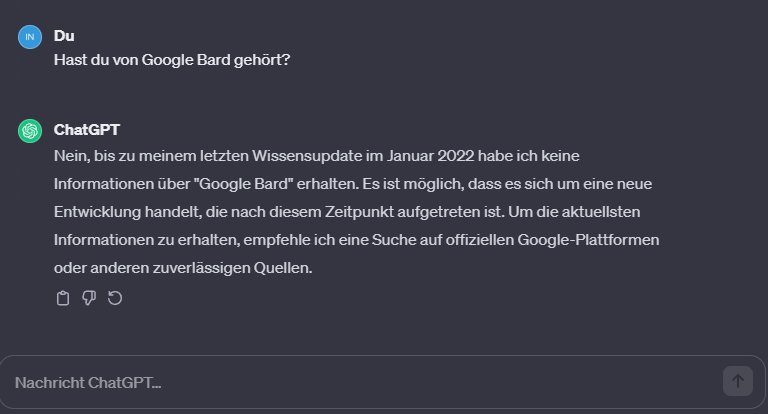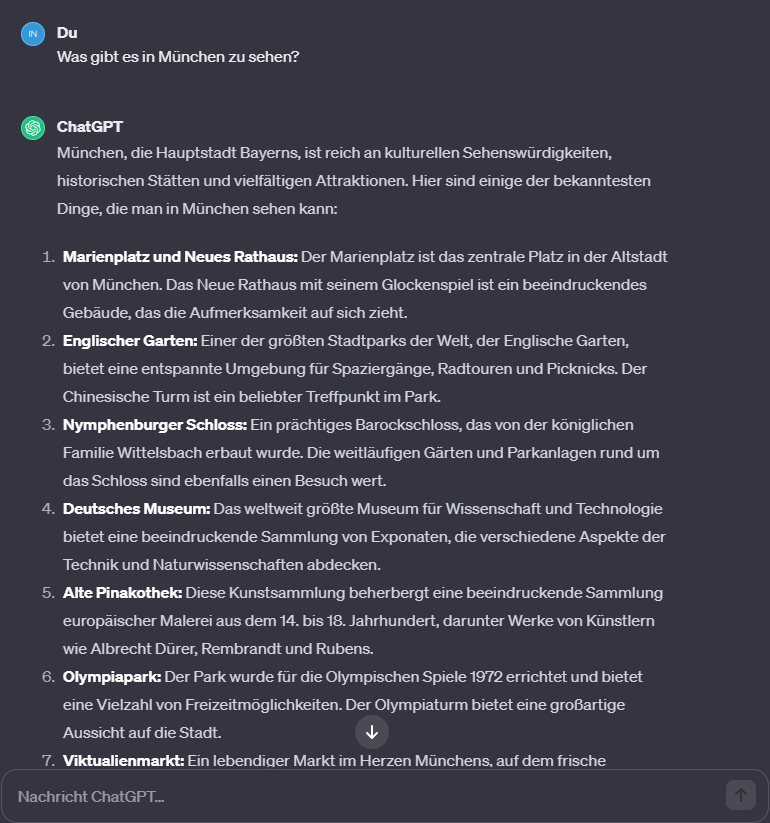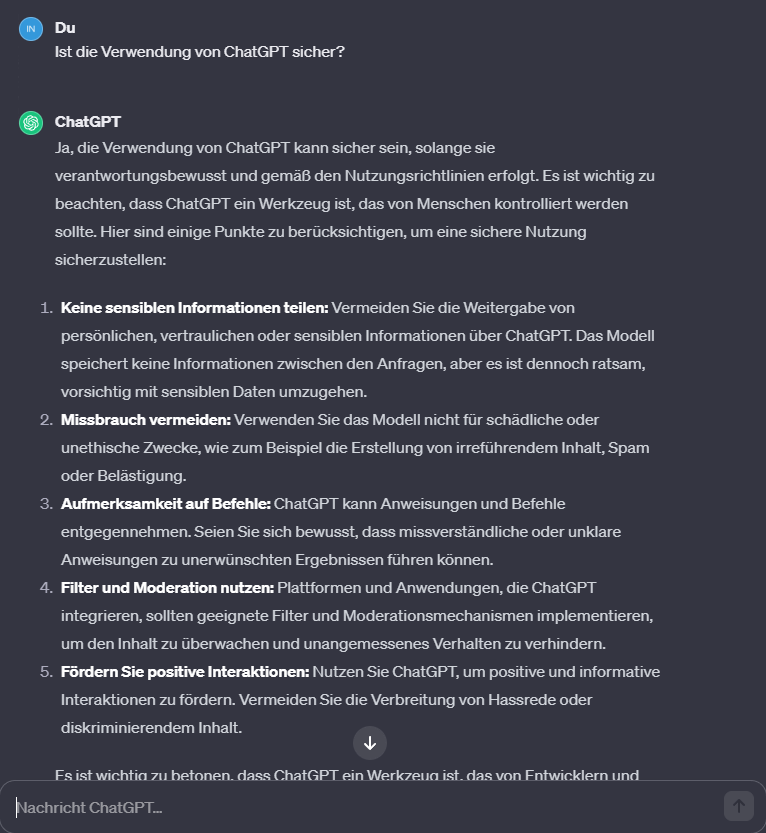ChatGPT vs. Google Bard
In October 2022, OpenAI surprised the world with the unveiling of its chatbot, known as ChatGPT. This innovative tool took the internet by storm with its ability to generate content on demand. Just a few months later, Alphabet, Google's parent company, took up the challenge and unveiled its own AI chatbot - Bard, on March 21, 2023.
This blog explores the fascinating dynamic between these two powerful artificial intelligence tools. Although they share similar features, there are key differences between ChatGPT and Google Bard that affect how they access and generate content.

Before we delve deeper into the differences between ChatGPT and Google Bard, I'll briefly familiarize you with the basics of these technologies in case you weren't familiar with them before.
What is ChatGPT?
ChatGPT is an AI-driven chatbot that uses machine learning to answer requests in a conversational dialog. OpenAI released ChatGPT on November 30, 2022.
GPT stands for Generative Pre-trained Transformer, a system that identifies patterns within strings of data. ChatGPT currently uses the GPT-3.5 language model, which has been trained on human-generated text on the Internet. The paid version, ChatGPT Plus, now uses the improved GPT-4 model. ChatGPT uses this language model to respond creatively to user queries.
What is Google Bard?
Google Bard is an innovative AI chat platform that works in a similar way to ChatGPT. With its advanced natural language processing capabilities, Bard can also be used to generate a variety of content types to suit different industries and niches - similar to what marketers and businesses are currently doing with ChatGPT.
Bard uses state-of-the-art AI technology to understand the context and requirements of your requests before generating unique text based on the input provided.
What are the main differences between ChatGPT and Bard?
1. data source
The main difference between ChatGPT and Bard lies in the data sources. Bard continuously pulls information from the internet and thus always has the latest data. ChatGPT's sources end with data from 2021, which limits it to more recent research and information. Bard has more data to gather information in real time by accessing the latest research.


When we asked about today's weather, we got the following results:


2. numerical diversity of answers
One of the main differences between ChatGPT and Google Bard is the number of variations each model can generate; ChatGPT can only generate a single output for a given input, while Google Bard (using a technique called "Beam Search") can generate multiple responses to a query.


3. programming skills
Both ChatGPT and Google Bard have specific strengths in coding ability; ChatGPT excelled at interpreting vague instructions and providing clear explanations, while Google Bard was superior at code refactoring and providing comprehensive debugging reasoning. Understanding these subtleties can help users make informed decisions about which model best suits their specific coding needs.


4. language support
Bard now supports an impressive 40 languages, including Japanese and Korean, underscoring Google's commitment to linguistic inclusivity. By expanding its language coverage, Bard opens doors to a broader user base and provides language-specific insights, information and help worldwide, contributing to global understanding and collaboration.
With support for over 50 languages, ChatGPT allows users to interact and receive support in their preferred language. This variety of linguistic options creates a comfortable environment for people of different linguistic backgrounds to communicate, promoting effective information exchange and mutual understanding.
5. display of images from the Internet for better understanding
A key difference between Bard and ChatGPT is Bard's ability to provide responses with images.


6 Data storage and data protection
ChatGPT stores all messages entered, regardless of topic or content. Users have the option to review previous conversations, which means the chatbot itself will go through these conversations. Although it is possible to delete certain conversations, information from them may have already been extracted and included in the rich language model for training the chatbot. This means that privacy issues may arise when personal data or confidential information is shared.
Google stores user conversations via Bard in their Google account for up to 18 months, but users can change this to three or 36 months in the Bard activity settings. Conversations via Google Bard may also appear in search results, so privacy may also be an issue.


7 Free vs. premium functions
ChatGPT offers users both free and premium versions, allowing flexibility of use according to individual needs. In contrast, Google Bard currently provides all features completely free of charge, making it an accessible and cost-effective option for users seeking advanced voice processing with no associated costs.
The right decision for your requirements
Both ChatGPT and Bard offer a variety of valuable features, so it's crucial to understand their strengths and best use cases to figure out how to best utilize each to their full potential.
ChatGPT is an excellent choice for fostering creativity, supporting brainstorming and generating text. On the other hand, Google Bard is ideal for quick research, precise answers and straightforward content generation. Together, they offer versatile opportunities for creative expression and efficient information retrieval.
Conclusion
ChatGPT and Bard are two powerful tools with different strengths. Understanding their specific benefits is crucial to making the most of their capabilities. ChatGPT excels at fostering creativity and generating a variety of textual formats, while Bard is ideal for quick research and straightforward information processing. Using ChatGPT, users such as content creators, writers and creative minds can easily generate inspiring texts. On the other hand, Bard is particularly useful for engineers, marketers and researchers who want to find relevant information quickly. Tools, individually or in combination, offer a variety of possibilities for creative expression, efficient research and quick problem solving. The choice between them depends on the specific needs of the users, and their combination can provide the best results for different application scenarios


